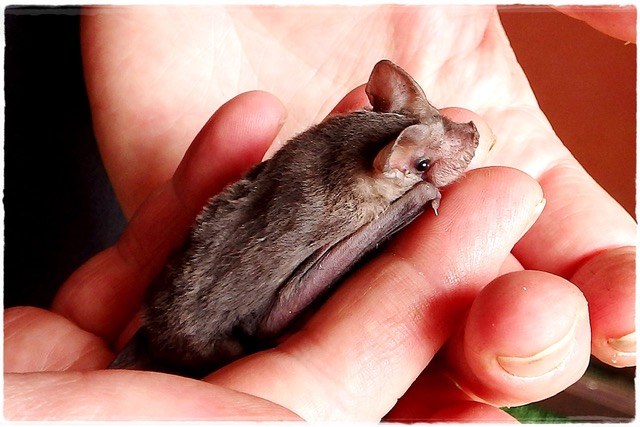
Going Batty for our Local Bats
Around 35 people attended Bat night in Goulburn at the end of March proving that there is some love out there for these unfairly maligned creatures.
It would seem that bats generally get a bad rap, misunderstood and dubbed blood suckers and disease carriers, they have been feared and persecuted across the world. The truth is however, we should be shouting the praises of these ecosystem super heros according to passionate wildlife carer and bat enthusiast Heather Caufield.
“We have a huge number of reasons to thank and celebrate bats, not simply because they are fascinating creatures in their own right but they also help people in countless ways.” Says Ms Caufield.
Goulburn Bat night participants were treated to a smorgasbord of interesting facts and personal stories about these fascinating mammals.
There are two kinds of bats: large flying-foxes or fruit-eating bats (often called megabats), and the small insect-eating bats (often called microbats). which find their way through the dark using 'echolocation', listening to the echoes from their high pitched calls.
Australia is home to 70 species of microbats and a further 11 species of flying-foxes, blossom and fruit bats making up one-quarter of all our mammal species.
We have a number of threatened bats in the region. Notably there is a major maternity roost of the eastern bentwing bat (Miniopterus orinae oceanensis) at Bungonia. Other threatened species include eastern falsistrelle (Falsistrellus tasmaniensis), yellow-bellied sheathtail-bat, (Saccolaimus flaviventris) large-footed myotis (Myotis macropus), and large-eared pied bat (Chalinolobus dwyeri). Most of these species are more commonly found closer to the coast and escarpment country but the large-footed myotis (also known as the fishing bat) is commonly found along waterways.
Flying foxes are becoming more regular visitors to Goulburn with two species of flying fox in the Goulburn area including colony of little red flying foxes camped down by the wetlands and there have also been several rescues around Kiamma Creek in Crookwell. The Grey-headed flying foxes have also been observed in the region as well. Flying foxes don’t stay around long generally leaving around April depending on season as they travel from the North and East in search of food.
Flying Foxes- The "gardeners of the sky'
Flying foxes are a migratory and nomadic 'keystone' species; meaning a species that many other species of plants and animals rely upon for their survival and well-being. They live together in large colonies and fly out every night to feed on native flowering eucalypts they can be known to travel thousands of kilometres to find areas with fruiting or flowering trees. Regarded as ‘gardeners of the sky’ the flying foxes are vital to our environment as they help regenerate our forests and keep ecosystems healthy through pollination of our native forests and spreading seeds to ensure the longevity of our bush.
The major threats to the survival of the flying foxes include habitat loss (land clearing), camp disturbance, starvation, increased heat events, legal and illegal shooting, and man-made hazards like power lines, barbed wire and backyard fruit tree netting.
We are seeing them migrating to our region more regularly with effects of climate change and pressures from development and land use change.
Microbats- The insect terminators
Microbats range in size from the tiny Little Forest bat, weighing in at 3 grams or about the same as a teaspoon of water, up to the Ghost bat which weighs around 40grams. Most roost in tree hollows or under bark but some species take up residence in building cavities. They feed on a range of insects, including many pest species. Some bats eat more than 70% of their weight in insects each night and some pregnant females at 100% of their body weight (that’s a lot of insects!). A US Study suggests that bats provide a service worth an estimated US $1bn globally by controlling pests on corn crops alone.
Bats generally have small numbers of young. Many bats have only one baby per year. They generally mate in Autumn when males are in best condition and then the females store the males sperm until spring, or keep the fertilized egg from growing in order for the female to give birth in the spring when their food comes alive again. They need a lot of food to feed both themselves and their babies.
Bats can also slow their bodies down and go into torpor a kind of hibernation to save energy when it is cold or when they're inactive during the day.
Bats and disease
Australian Bat Lyssavirus (ABLV) is a virus, similar to rabies that can be transmitted from bats to humans.It is possible for the virus to be transmitted by flying-foxes (also known as fruit bats) or microbats. Although few animals are thought to carry the disease (less than 1% of flying-foxes and bats), it is mandatory that anyone working with these animals is vaccinated as a safety precaution and this is a requirement of the NSW Health Service.
If you see a sick, injured or orphaned bat please keep your distance, do not touch it or try to contain it.
Call WIRES Rescue Line immediately on 1300 094 737 or fill in the rescue form for rescue assistance with any bats, all WIRES bat rescuers have been vaccinated and these rescues will be attended ASAP by the rescue team.
To find out more about bats and download fact sheets, nest box designs, wildlife friendly fencing and netting visit the Australasian Bat Society.









